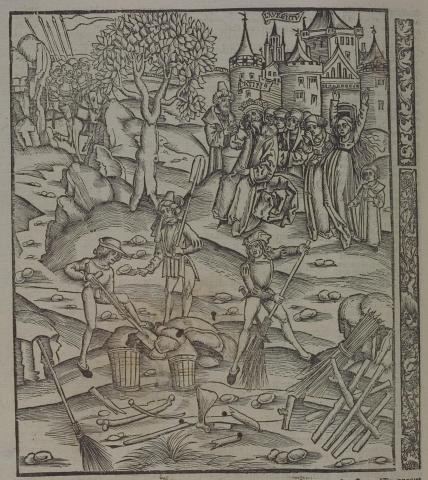Annotations
In this image, the Latins bury their dead. The number of indistinguishable dead was so great that the Latins burned them all on one large pyre and then buried the ashes and bones under a large mound of earth right where the pyre had been (203-12). In the upper left, an envoy sent to Diomedes for help has come back bringing a refusal from Diomedes (225-30). In the upper right, Latinus, sitting among grieving citizens outside Laurentum, hears the news and is struck with unbearable grief himself (231).
Woodcut illustration from the “Strasbourg Vergil,” edited by Sebastian Brant: Publii Virgilii Maronis Opera cum quinque vulgatis commentariis expolitissimisque figuris atque imaginibus nuper per Sebastianum Brant superadditis (Strasbourg: Johannis Grieninger, 1502), fol. 375v, executed by an anonymous engraver under the direction of Brant.


Sebastian Brant (1458-1521) was a humanist scholar of many competencies. Trained in classics and law at the University of Basel, Brant later lectured in jurisprudence there and practiced law in his native city of Strasbourg. While his satirical poem Das Narrenschiff won him considerable standing as a writer, his role in the transmission of Virgil to the Renaissance was at least as important. In 1502 he and Strasbourg printer Johannes Grüninger produced a major edition of Virgil’s works, along with Donatus’ Life and the commentaries of Servius, Landino, and Calderini, with more than two hundred woodcut illustrations. (Annabel Patterson)